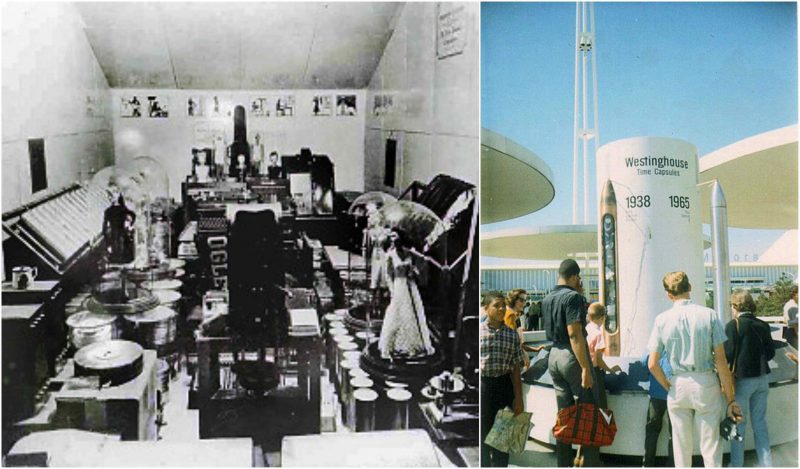People have been burying things — including each other — as a means of preserving them since the beginning of time. A time capsule, however, is by definition preserved with the intention of being opened and unveiled at some specific future date.
The time capsule enjoyed its golden age during the 1950s and ’60s, a historical era during which people were generally obsessed with the future and generally convinced that it would be futuristic: shiny, happy, and mechanized. In this sense, time capsules belonged to the same family of phenomena as The Jetsons and Walt Disney World’s Epcot Center…
I imagine that some afternoon, ten or twenty or fifty years from now, a series of messages will arrive in my inbox, and I will open them to find at long last the answers to the questions I asked way back in December of the year 2007…” – The Time Capsule, Eli Evans
The 1876 Century Safe
The world’s first planned time capsule debuted in 1876, when New York magazine publisher Mrs. Anna Deihm, the widow of Civil War veteran Charles F. Deihm, attempted to give to Congress a large iron safe containing several quirky pieces of Americana that she had amassed during the country’s centennial celebration in 1876. The contents of the roughly five-foot-tall safe included photographs taken by photographer Mathew Brady and autographs of public figures, a gold pen and inkstand and a book on temperance.
After being sealed in 1879, the purple velvet-lined safe was taken to the U.S. Capitol and eventually left to languish under the East Portico. Though nearly forgotten, it was later rediscovered, restored and unlocked on schedule in July 1976 during the nation’s bicentennial festivities. At a ceremony attended by President Gerald Ford, Senator Mike Mansfield said the opening had honored “the wish of a lady who sought to speak to us from the other side of a 100-year gulf”, while President Ford noted that “There is no safe big enough to contain the hopes, the energies, the abilities of the country. Our real national treasure does not have to be kept under lock and key.”
The Crypt of Civilization
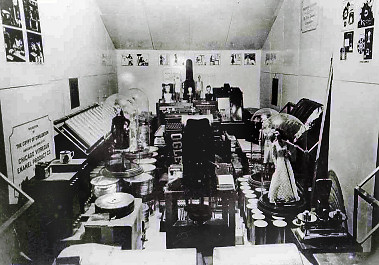
In the basement of Phoebe Hearst Hall at Oglethorpe University in Georgia, there is a stainless steel vault door which was welded shut in 1940. Well, that is The Crypt of Civilization. It is the oldest millennial time capsule in conception and the largest in the world. In 1936, detailed plans were executed to build an extraordinary time capsule– one designed to store records for over 6,000 years, done on what could perhaps be described as an epic scale never before conceived.
The visionary of this improbable quest was Oglethorpe University president, Dr. Thornwell Jacobs, referred to as “the father of the modern time capsule”. Jacobs is the first in modern times to conceive the idea of consciously preserving man-made objects for posterity by placing them in a sealed repository. Beginning in 1937, he converted an underground 20-by-10 chamber in the administration building into a museum of civilization filled with everything from 640,000 pages of microfilmed books and religious texts to an early television, a container of beer and a set of toy Lincoln Logs. The vault even features a special “language integrator” to help teach English to whoever might find it. The entire haul was welded off behind an airtight stainless steel door during a ceremony in May 1940.
Jacobs’s inspiration for the project was sparked by the Egyptian pyramid and tomb openings in the 1920s. He was struck by the scarcity of historical information available from these ancient civilizations and imagined having a “running story” of the customs of human life from the beginning to the 1930s modern culture.
Although the claim that 4241 BC (July 19) is the “earliest fixed date” has been discredited since Jacobs, he noted that 6,177 years had passed between when the Egyptian calendar was established in 4241 BC and the present year (AD 1936). This figure served as the rationale for setting the opening of the crypt for 8113, as it was 6,177 years away.
The Westinghouse Time Capsules
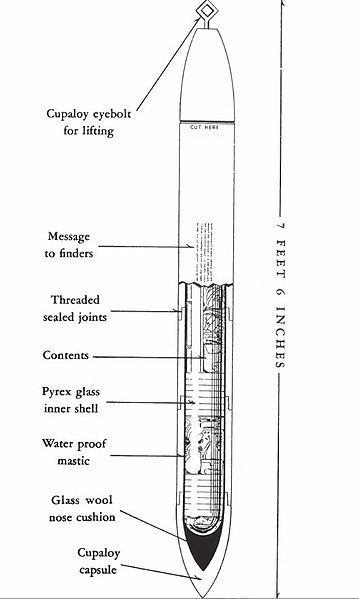
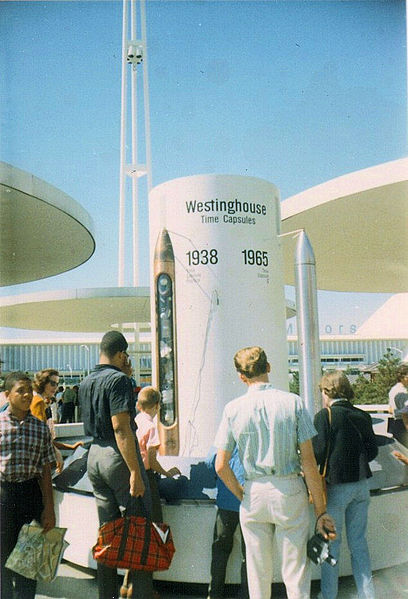
The Westinghouse Time Capsules are two, time capsules prepared by the Westinghouse Electric & Manufacturing Company: “Time Capsule I”, created for the 1939 New York World’s Fair; and “Time Capsule II”, created for the 1964 New York World’s Fair. Both are buried 50 feet below Flushing Meadows – Corona Park, the site of both world’s fairs, the 1964 capsule 10 feet north of 1939 one. Both are to be opened at the same time in the year 6939, five thousand years after the first capsule was sealed.
While the 1964 capsule contains objects categorized as articles in common use, atomic energy, scientific developments, space, or other; the 1939 capsule contains 10 already obsolete things as Keuffel and Esser slide rule, artificial leather asbestos shingle (furnished by Johns-Manville), Transit consisted of cement and asbestos, an essay in microfilm equivalent of more than 100 ordinary books, a total of more than 22,000 pages, more than 10,000,000 words and 1000 pictures; a microfilm reader or the instructions to make one, Dr. West’s tooth powder, Boy’s toy – a mechanical, spring propelled automobile, Kodak Bantam camera, Handset type – capital and lowercase alphabets of Goudy Village, and a linotype.
In the 1939 capsule there are also everyday items such as Camel cigarettes and a plastic child’s cup featuring Mickey Mouse and a letter from physicist Albert Einstein, who praised the scientific progress of his age but also added that, “People living in different countries kill each other at irregular time intervals, so that also, for this reason, anyone who thinks about the future must live in fear and terror.”
The Detroit Century Box
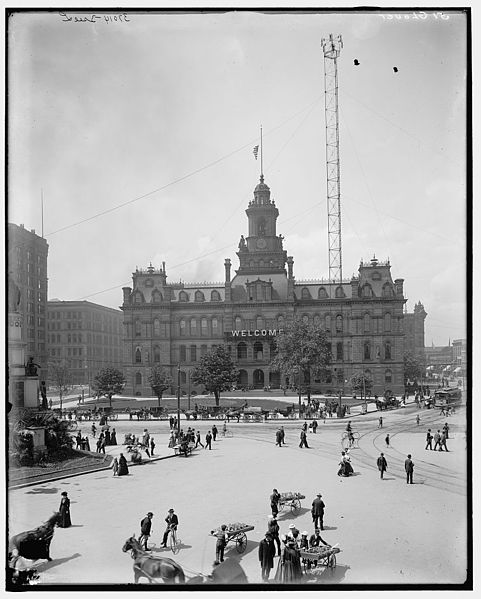
Shortly before the 19th century came to a close, Mayor William C. Maybury sent requests to 56 prominent residents asking for their observations, insights, and possible prophecies for the future of Detroit. The letters were placed in a metal “Century Box” at midnight on December 31, 1900, where they remained for the next 100 years until their opening by Mayor Dennis Archer at Orchestra Hall at 11:20 PM on December 31, 2000. The opening celebration carried into the early hours of 2001 which coincided with Detroit’s 300thAnniversary.
When Detroit Mayor Dennis Archer finally opened the “Century Box” in December 2000, it was found to contain several dozen letters to the future written by the city’s business and political leaders. Most of the missives included descriptions of the wonders of 1900 Detroit along with musings on what life in the 21st century might be like. Here is what Maybury left to his future successor:
Our buildings of today are equipped with fast running elevators, heating, lighting, power plants…
— John M. Donaldson, Rise of Architecture in Detroit
In the diocese there 218 priests – 44 Regulars – 174 Seculars. 198 Churches and missions…
— John Samuel Foley, Letter to William C. Maybury
We travel by railroad and with steam power from Detroit to Chicago in less than eight hours…“We talk by long distance telephone to the remotest cities in our own country…Are you talking with foreign lands and to the islands of the sea by the same method?” Other prognosticators were not so accurate. A few speculated that Canada would be annexed or that Ontario would become a U.S. state…
— William C. Maybury, Letter of William C. Maybury
Of the 44 United States, 25 have limited suffrage, 4 have full suffrage, limited suffrage is granted in many foreign countries and full suffrage in New Zealand, South and West Australia, and in Isle of Man.
— Sara M. Philleo Skinner, Woman’s Suffrage – Retrospect and Prophecy
The Expo ’70 Time Capsule
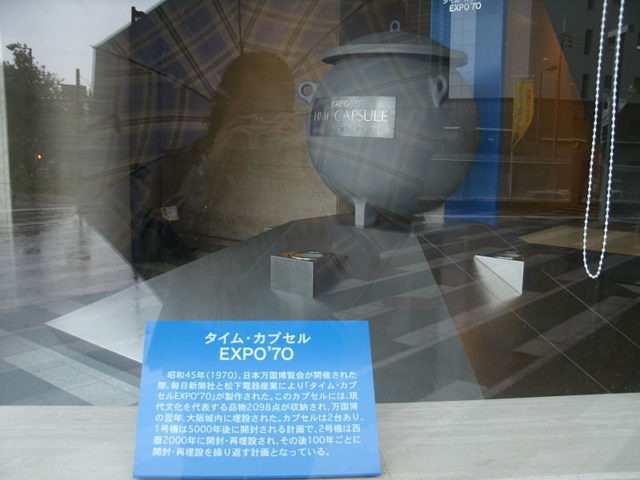
Expo ’70 was a world’s fair held in Suita, Osaka, Japan, between March 15 and September 13, 1970. The theme of the Expo was “Progress and Harmony for Mankind.” In order to celebrate the event, Panasonic Corporation, and The Mainichi Newspapers, agreed to undertake a joint time capsule project. After three years of planning, research, and construction, two, time capsules identical in every detail were buried adjacent to Osaka Castle. The lower capsule will remain buried for 5,000 years; the upper capsule will be opened for the first time in the year 2,000 and every 100 years thereafter.
After undergoing laboratory testing it was reburied and will be opened every 100 years thereafter so that the latest preservation techniques can be used to ensure their safekeeping. Hoping for never ending world peace and prosperity, these capsules were filled with 2098 cultural assets of the 20th century chosen by a team of scientists, engineers, historians, and many of them were suggested by the public.
If the two capsules endure until the planned opening date of 6970 A.D., their future owners will find an extensive collection of films, seeds, and microorganisms as well as a ceremonial kimono, a Slinky and even the blackened fingernail of a survivor of the 1945 Hiroshima atomic bombing. Other items include a silk condom, false teeth, a glass eye, insects encased in resin, an origami instruction book, handcuffs and counterfeit money.
The Massachusetts State House Time Capsule
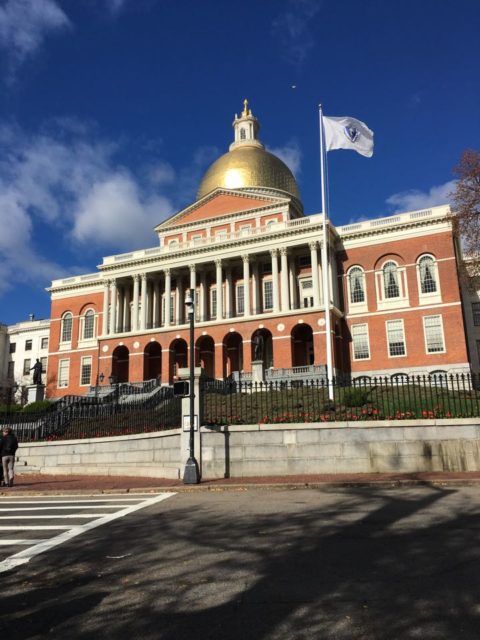
The United States’ oldest known time capsule was the work of none other than Samuel Adams and Paul Revere. In late 2014, repairmen fixing a water leak at the Massachusetts State House uncovered a brass box that the two former Sons of Liberty had placed in a cornerstone to mark the building’s construction back in 1795.
It was first removed from its location in 1855, at which time its contents were cleaned and documented. Additional items were added to it at that time, and it was resealed in place. The capsule was again removed from its location in December 2014. It was opened by specialists in a media event in the American gallery of the museum on January 6, 2015.
When it was finally unsealed in 2015, however, the Massachusetts State House Time Capsule was found to contain a trove of preserved artifacts including newspapers, coins dating back to the 1600s, a page from the Massachusetts Colony Records and a copper medal with an image of “General of the American Army” George Washington. Most exciting of all was a silver plaque—believed to be engraved by Paul Revere—that read, “This cornerstone of a building intended for the use of the legislative and executive branches of the government of the Commonwealth of Massachusetts was laid by his Excellency Samuel Adams, Esquire, governor of the said Commonwealth.”
The Juneau Time Capsule
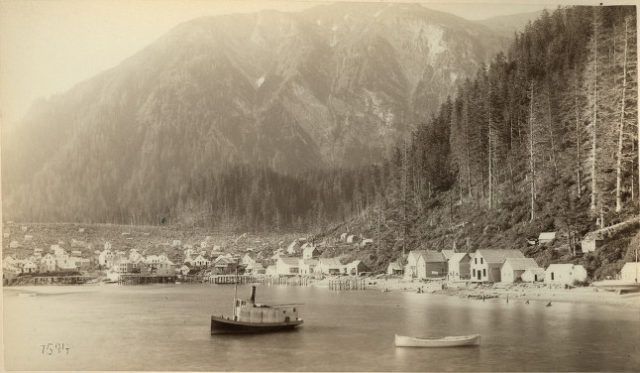
The city of Juneau installed a time capsule in a sealed room fitted with a plate glass observation window on the ground floor of the Federal Building in 1994.
First closed off in 1994, the 9-by-6 foot chamber is packed with thousands of pieces of memorabilia scrounged by locals as part of a citywide project. Many of the objects are everyday relics of the 90s—a Wonderbra, a Sony Walkman, a Barbie doll—but there are also old drivers licenses, family mementos and a box containing menus from all of Juneau’s restaurants. The vault also includes hundreds of letters written by schoolchildren to the students of the future. Copies of the notes were put on display several years later, but the originals will remain sealed off until New Years Eve 2094—the date when the capsule is scheduled to be opened after 100 years. “If you want to include me in your history book as the best fifth grader in the year 1994-1995,” one student wrote, “go ahead and do it.”
The Future Library

Scottish artist Katie Paterson has launched a 100-year artwork – Future Library – Framtidsbiblioteket – for the city of Oslo in Norway. A thousand trees have been planted in Nordmarka, a forest just outside Oslo, which will supply paper for a special anthology of books to be printed in one hundred years time. Between now and then, one writer every year will contribute a text, with the writings held in trust, unpublished, until 2114. Tending the forest and ensuring its preservation for the 100-year duration of the artwork finds a conceptual counterpoint in the invitation extended to each writer: to conceive and produce a work in the hopes of finding a receptive reader in an unknown future.
None of the entries will be available to read until the project is complete, however, and the writers are forbidden to reveal anything about their works other than the title. Canadian novelist Margaret Atwood submitted the first manuscript, called “Scribbler Moon,” in 2014, and British author David Mitchell provided the second the following year. Their manuscripts, along with 98 forthcoming titles from other writers, will be held in a public library in Oslo until their official unveiling in the 22nd century.
